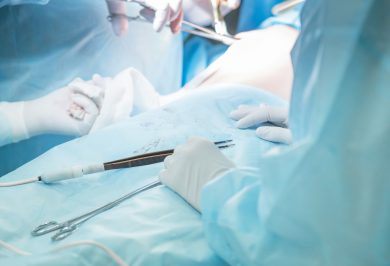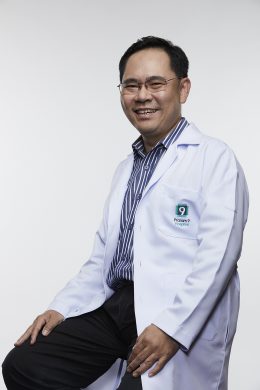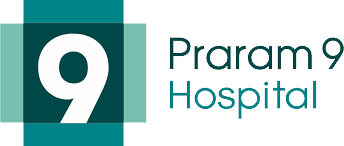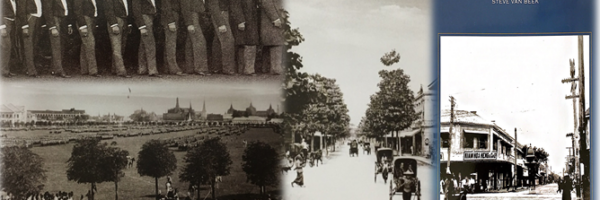
Build new flesh of the breast with your own tissue after having a mastectomy in breast cancer patients
Currently, the top mortality rate of Thai women is still breast cancer. To prevent breast cancer, all women at the age of 40 years old and above should receive the screening test for breast cancer by using the mammogram and ultrasound as well as receiving the specialised physical checkup once a year. In case of having suspicious symptoms, have a checkup every 6 months. In case of having abnormalities, the doctor will continue to perform the biopsy. Breast cancer can be cured if it is found early.
Needle biopsy (make sure before having breast cancer surgery).
 Needle Biopsy or what is fully called “Image-guided Percutaneous Breast Biopsy” is a breast biopsy using radiological equipment to indicate the position of the lesion. The equipment is an ultrasound machine and stereotactic unit. The advantage of Needle Biopsy is that it can be used with the lesion that can be felt or not felt, which provides higher accuracy for biopsy of lesion by feeling with hands and can reduce the number of “Open Surgical Excisional Biopsy” that can take a longer time and cause a larger wound, and scar tissue inside the breast which can be seen in following mammogram tests.
Needle Biopsy or what is fully called “Image-guided Percutaneous Breast Biopsy” is a breast biopsy using radiological equipment to indicate the position of the lesion. The equipment is an ultrasound machine and stereotactic unit. The advantage of Needle Biopsy is that it can be used with the lesion that can be felt or not felt, which provides higher accuracy for biopsy of lesion by feeling with hands and can reduce the number of “Open Surgical Excisional Biopsy” that can take a longer time and cause a larger wound, and scar tissue inside the breast which can be seen in following mammogram tests.
The 2 methods of Needle Biopsy are:
1. Fine Needle Aspiration (FNA)
In this method, a small needle is used to remove some parts of the suspicious lesion which is then sent to the cytology laboratory for diagnosis.
Advantage: It can be quick and convenient, the equipment is simple and the cost is cheaper. There will be less damage to the tissue round the lesion. The wound that occurs after using this method will be small, like a puncture wound from blood drawing. Any complications after the procedure are low such as from blood loss or wound infection.
Disadvantage: It relies on the expertise of the doctor in charge and the cytopathologist conducting the diagnosis.

2. Core Needle Biopsy (CNB)
In this method, a large needle will be used to take out parts of the tissue from the suspicious lesion which will then be sent to the pathology laboratory for biopsy.
Advantage: It can be used with several types of lesions, whether in the form of lump, small limestones, breast deformity, or a tumour in the milk duct. Moreover, this method provides higher specificity and sensitivity in the diagnosis than FNA. More importantly, the flesh that is obtained from this method can be used to check for ER, PR and HER2. These values are necessary in the consideration of providing the medication to the patients who are diagnosed with breast cancer.
Disadvantage: In CBN, the equipment that is used must be specific. The methods are more complicated. The cost is more expensive and the wound is likely to be larger. There are a higher chance of complications, such as from bleeding and wound infection.
Build new flesh of breast with your own tissue in breast cancer surgery
Currently, the advancement of technology in breast examinations and promotion of self-examination has resulted in discovering breast cancer at an early stage, providing a higher survival rate. Surgery, which is the main treatment, has been developed from the past and focuses only on survival. It takes the quality of life and beauty of the patient into consideration.
Likewise, in breast cancer patients, their breasts are not necessary to be taken out. In case of mastectomy, breast augmentation can be done immediately after the surgery by using breast prosthesis or tissue of the patient. The popular tissues are the muscles and the lipid layers in the abdominal surface and the muscles and the lipid layers in the back.
There are 2 surgical methods for breast reconstruction:
1. Latissimus Dorsi (LD) Flap
 LD flap is a method that is used for breast augmentation for breast cancer patients that need to have a mastectomy. This method involves the use of Latissimus Dorsi and the fat at the back for augmentation after having the mastectomy.
LD flap is a method that is used for breast augmentation for breast cancer patients that need to have a mastectomy. This method involves the use of Latissimus Dorsi and the fat at the back for augmentation after having the mastectomy.
Rules for selecting patients for this surgical method
- Patients with small or medium breasts
- Patients with slightly sagging breasts
- Patients that cannot use the abdominal muscles for augmentation due to scarring on the abdominal surface
- Patients who need revision surgery in case of having breast augmentation by other methods
There are 2 methods of LD, which are:
- Latissimus dorsi miniflap – take out some LD muscles just enough to cover the breast defect after having the lumpectomy.
- The extended LD flap technique – used in total breast augmentation in case the patient has had a mastectomy.
2. Transverse Rectus Abdominis Musculocutaneous flap (TRAM flap)
This is total breast augmentation by using the muscles and the lipid layers in the abdominal surface for augmentation after having a mastectomy.
Rules for selecting patients for this surgical method
- Suitable for all types of breast size in breast cancer patients
- Patients with heavy sagging breasts
Both surgical methods as mentioned above are commonly used at present because they are safe, provide less complications, and take only 3-5 days for recuperation, which improve the life quality of the breast cancer patient in terms of the patient themselves, family, and society.
Conclusion
In total breast augmentation, apart from using one’s own tissue to reduce the expense, it can also help the breast cancer patient with mastectomy to be confident in their daily life. Moreover, it can reduce the problems of having multiple breast surgery. Therefore, for the breast cancer patient who needs to have a mastectomy and breast augmentation, this method is one of those that can greatly help the patient. Consultation with the surgeon is necessary to learn about the advantages and disadvantages of each method.





